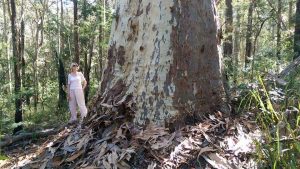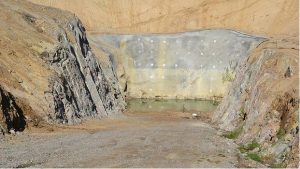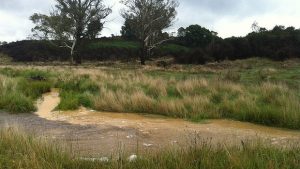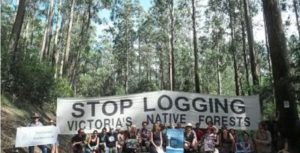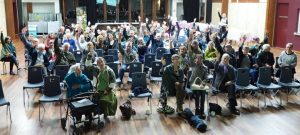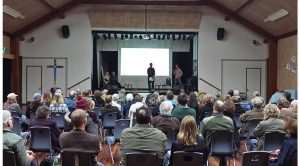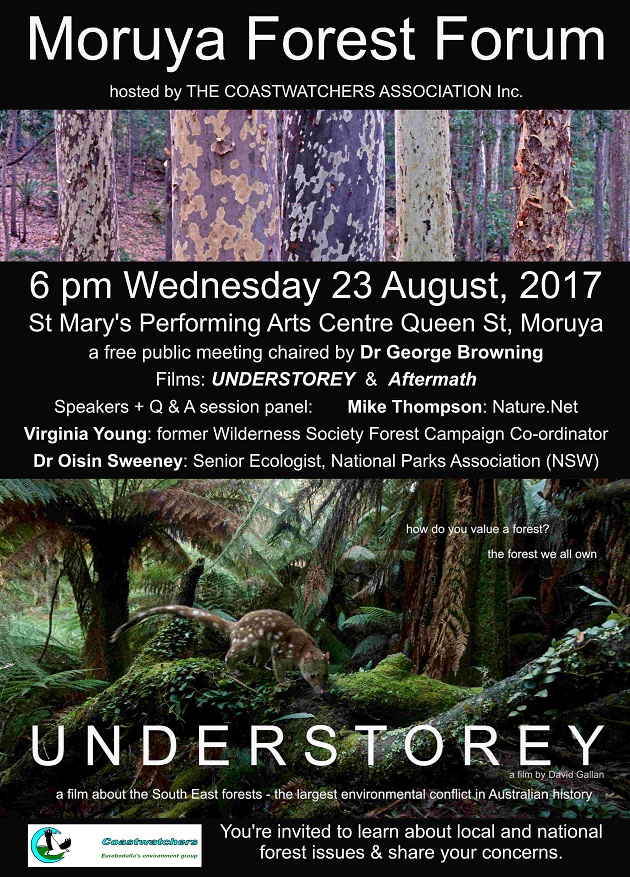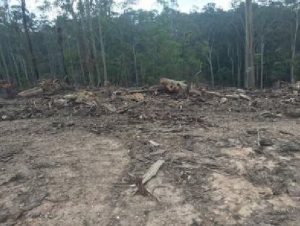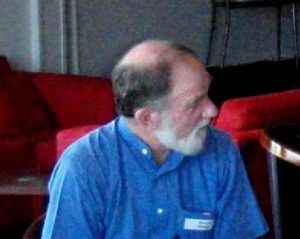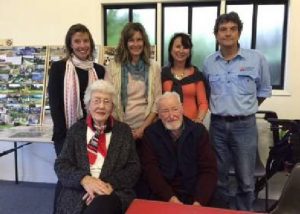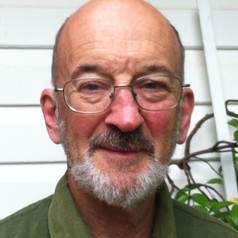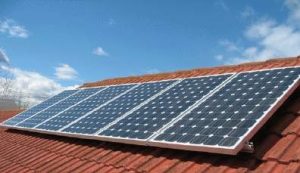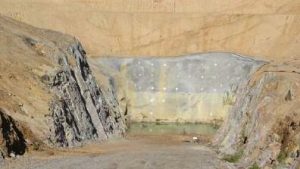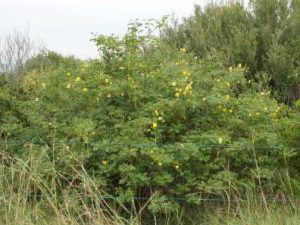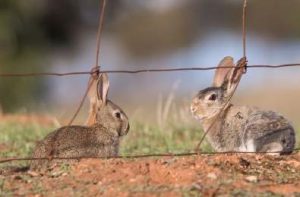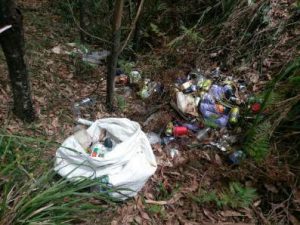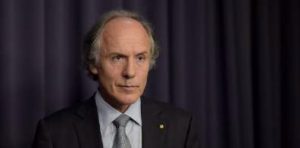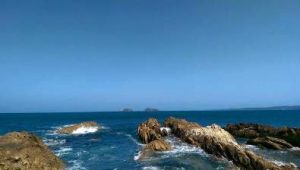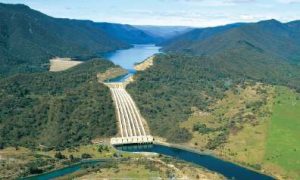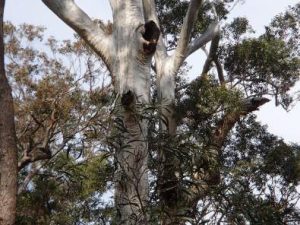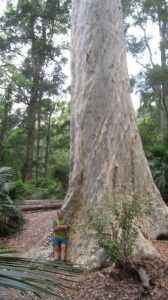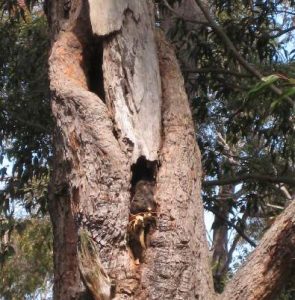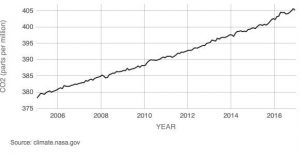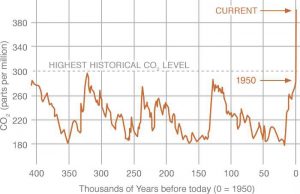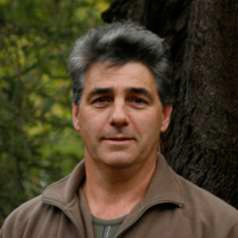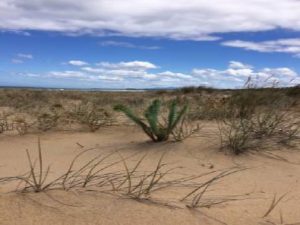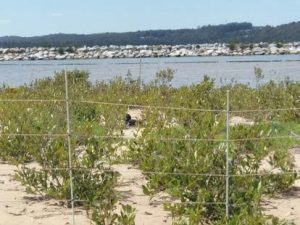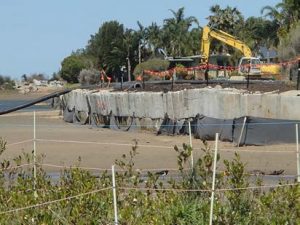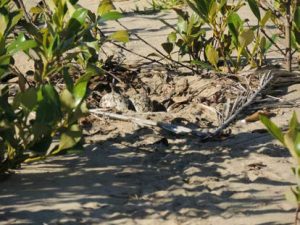PRESENTATION BY DR EMMETT O’LOUGHLIN
to the COASTWATCHERS ASSOCIATION AGM,
Saturday 31 Oct 2015
Title: THEY’RE NOT REAL!
(An acknowledgment to Roger Hosking,
the Braidwood weather observer.)
HISTORY
In September 1851 gold was discovered at Araluen, NSW and in October 1851, 4 oz. of gold was discovered at the now Majors Creek road bridge. By December there were 2-3000 diggers in the area working the alluvial and upper weathered granite. By the 1860s the alluvial gold had been worked out. Subsequently the Chinese reworked the area and the mullock heaps.
Reefs were discovered in the late 1860s, but capital was needed to mine the harder rock. Joseph Dargue found the largest reef in 1868. He crushed 200t/week of partly decomposed granite, yielding 3 oz/ton, which declined to ½ to 1/3 oz/t (6-14g/t), at which time it was becoming uneconomic. The deeper gold was 20% free and 80% bound into pyrite (FeS2), and needed non-gravity recovery. Dargue sold out 1872, and by then the shaft was 80 feet deep, and a total of 6,610 ozs had been won.
Ore and Process
Over the next 140 years, there were a series of false starts, involving many companies. Chemical extraction was developed in the 1880s (cyanide). To process the ore, it needed to be crushed to a fine sand size. Gravity and mercury were used for free gold, and floatation to separate the gold-bearing pyrite from crushed granite. The floatation agent was sodium ethyl xanthate, which forms bubbles with gold ore stuck onto them. These were skimmed off as pyrite concentrate and the cyanide dissolved the gold out of concentrate. Xanthates are highly poisonous to aquatic species, as well as mammals. Other chemical processes have been used since 1890s with variable results. Some concentrate was transported to Harden in 1890s, but most ventures were uneconomic even at 2 oz (56g)/t.
Gold price increase
In 1971 the international price of gold was deregulated and the price increased dramatically. In the 1980-2000 period ,a new boom in gold exploration occurred because of the increase in price and the development of the ‘Carbon in Pulp’ extraction method. Otto Exploration and Esso conducted geophysical surveys of the Majors Creek area and in 1974 Alan Jordon obtained a 13 ha mining lease over the Dargues Reef. In 1980 Amdex Mining commenced detailed exploration of the site. However, it was concluded the mine was uneconomic.
Between 1983-87 Canyon Resources conducted extensive regional exploration but failed to find significant new reefs. An EIS was produced during this period, but as the viability was questionable, no development occurred. In late 1986 Horizon Pacific floated a subsidiary Horizon Resources, which began re exploring the area. However, they had management and financial problems and walked away.
In 2001 the mining lease was then transferred from Alan Jordan to Ominco Mining. In 2004 it was acquired by Hiberna Gold (later Moly Mines) which undertook further drilling to at least 400 m and successfully identified a further 310,000 ozs (5-7 g/t). Moly Mines sold to Cortona Resources in July 2007. Drilling continued and mining plans developed. A development application was lodged in 2010 and it was intended to truck concentrate to the mothballed London Victoria mine near Parkes, to avoid environmental concerns with the use of cyanide at Majors Creek.
Mine approval
The DA was approved in September 2011. There were objections lodged to this approval, and these included the ESC, the Coastwatchers Association and SERCA. In December 2011 the ESC withdrew its appeal after receiving assurances regarding runoff control etc. Cortona reached agreement with other objectors and the mining lease was granted in April 2012, with conditions. This was the first gold mining lease issued in NSW in 10 years.
Cortona sought finance and a joint partner with appropriate technical capability. In September 2012 Cortona merged with Unity Mining (previously Bendigo Mining Ltd). In January 2013 site works commenced. There were a series of erosion issues, which resulted in fines from the EPA. In December 2013 Unity announced it was ceasing work to review the project and seek another $70m.
In November 2014 Unity Mining announced it was preparing a 3rd modification, and was proposing to use cyanide on site. In June 2015 an Environmental Assessment for the 3rd modification was released, and the public exhibition period was until 26 August 2014. Over 400 objections were received including the two local government Councils (Eurobodalla and Palerang). Unity Mining and the NSW Government are still considering the application.
CURRENT APPLICATION
Tailings Storage Facility (the dam)
The dam will store waste (crushed granite slurry in 10% xanthate solution). It will also contain heavy metals and sulphides. It is vital that the dam is stable, with no spillage, and no seepage. The tailings dam design is based on ANCOLD (Australian National Committee On Large Dams) recommended guidelines, which have no statutory requirements. Dam design specifications are related mainly to risk of possible deaths in the case of a collapse, and to a lesser extent on environmental impacts. NSW has a Dams Safety Committee and their specifications for dams link risk and dam design. However, their guidelines are based on ANCOLD’s and rely on self-regulation.
Dam stability
The original dam design of Unity Mining was an “upstream” construction in 3 lifts, which was the cheapest method. However the “upstream” method makes the dam prone to collapse in earth tremors by liquefaction (eg in Christchurch and San Francisco). The current modification proposes to change the design to “downstream” construction, which is purported to be safer.
Hydrologic design
The following points need to be made:
The dam fills by rain plus tailings slurry inflow.
The dam empties by evaporation and decant water recycled to mine.
Running water balance calculations (monthly, but preferably daily) are needed to determine if spillages will ever occur
The only accurate Australian data is historical Bureau of Meteorology data.
The consultants engaged by Unity Mining used incorrect data. Their estimates of rainfall were 30% too low, and evaporation were 60% too high. These errors were picked up by Roger Hosking, the official BOM observer at Braidwood.
Therefore the predictions by Unity Mining’s consultants of no spills from the dam are incorrect. They are not just wrong, but not even in the ballpark. If these are not altered, then any spills will have devastating consequences to all aquatic life in Majors creek and the Duea and Moruya Rivers.
In turn this will have a totally unacceptable impact on town water quality for the 70,000 residents in the Eurobodalla Shire.
Identical errors were present in the original DA. They were not discovered because Unity Mining’s consultant’s documents were never released. As a result the original dam design remains faulty.
It is interesting to note in the EA for the 3rd Modification (and the original DA), that the design for harvestable water was undertaken by different consultants, who used the correct BOM data. Yet nobody at Unity Mining, or more importantly in the State or Local Government picked up the vital differences in the data sets between the two consultants reports.
Seepage
The proposed design uses a clay layer and neoprene liner to prevent seepage. Seepage barriers can and will be damaged and degraded over time, and become ineffective. Damage is inevitable during construction, and later by animals such as wombats or yabbies.
The design also includes a downstream seepage collection pond, which pumps back seepage into the dam. This is fine during the life of the mine, but what happens after closure when the mine is in ‘care and maintenance’, when nobody is on site to manage issues, and most probably the company no longer exists.
Fail-safe design
The wastewater level in the dam will frequently exceed the normal operating level after storms. ANCOLD guidelines require this excess be pumped out of Tailings Storage Facilities within 7-14 days. However, there is nowhere for this contaminated waste to go, except into Spring Creek. The likelihood of this eventuality is very high, given the faulty hydrologic design of the dam. Victorian Government Guidelines suggest provision of an emergency overflow dam, kept empty during normal operations, to catch spillages. However, Majors Creek is in NSW not Victoria.
Conclusion
In the preparation of Environmental Impact Statements and Environmental Assessments, there is always the danger that the consultants engaged by the client will prepare advice that the client wants to hear. In the case of Unity Mining at Majors Creek, the inaccurate weather data presented by the consultants has the possibility of completely distorting the end result and the viability of the project.
It can only be hoped that the Planning Assessment Commission and the State Government force Unity Mining to rework its plans so that the final decisions are based on accurate data.
The history of the Dargues Reef Mine has been littered over 150 years with optimism and subsequent failure. The concentrations of gold have always been low and the processing costs high because of the geology. The price of gold is also a factor affecting the mine’s viability as is the availability of finance. Combine these together and the viability of this project remains uncertain.

